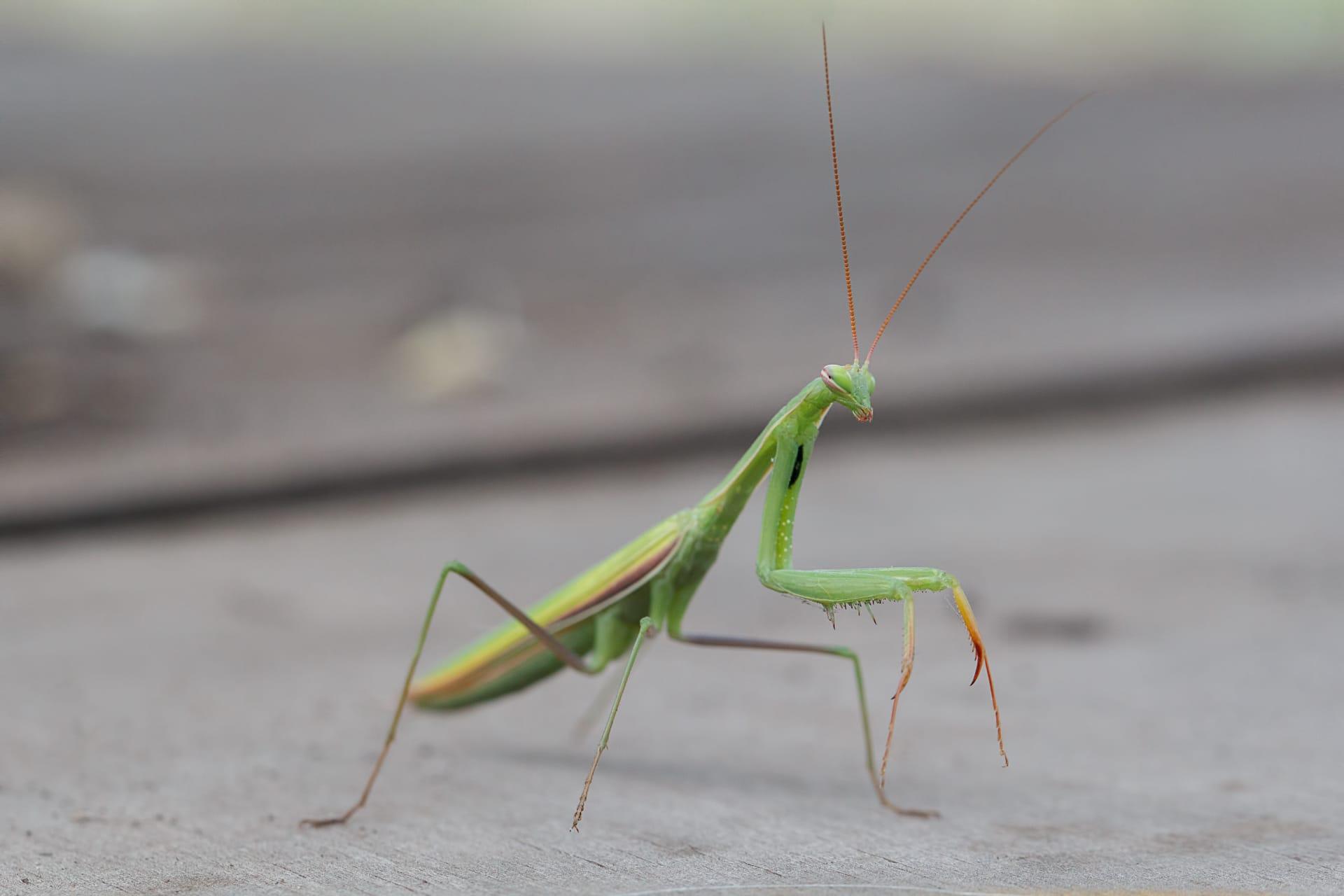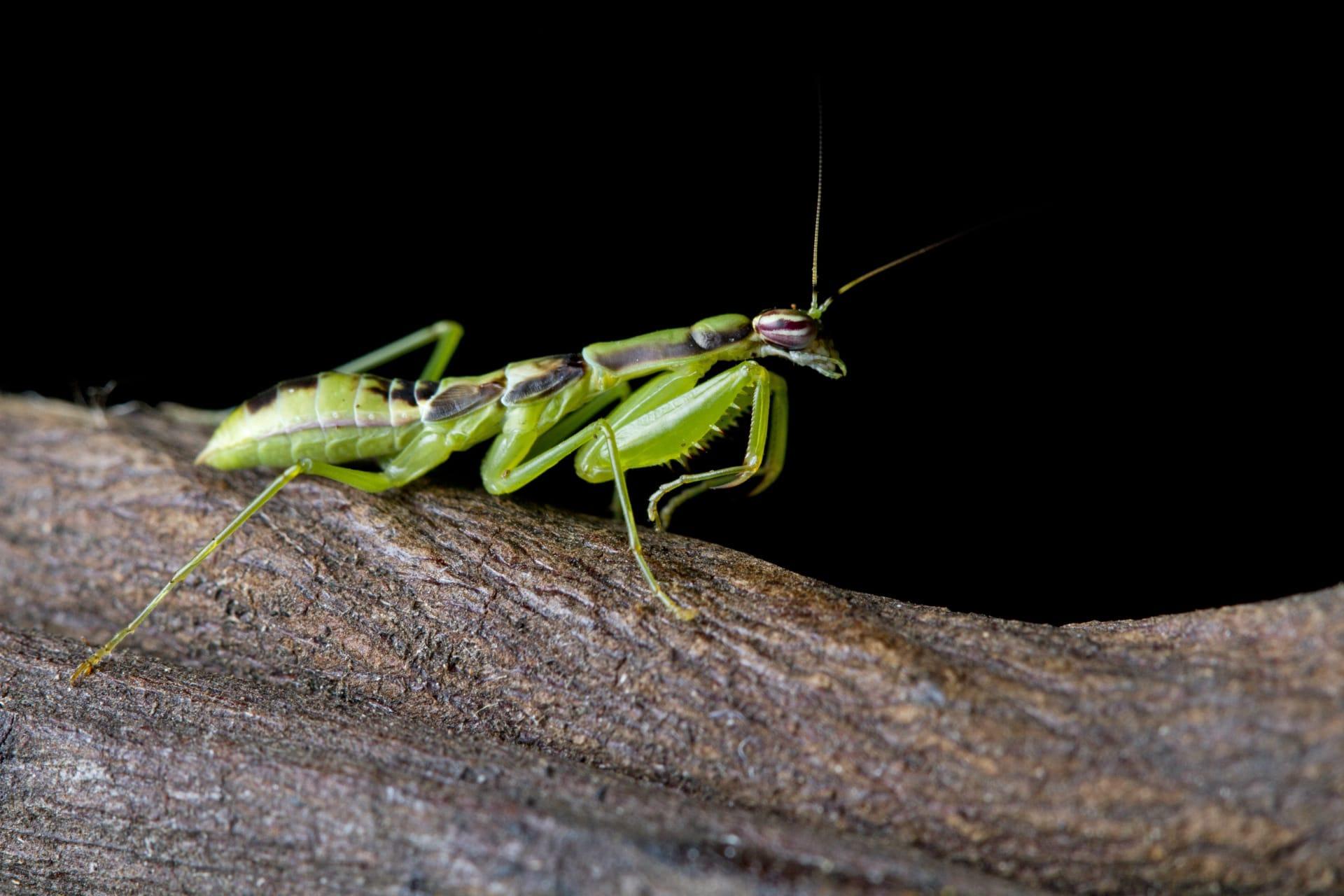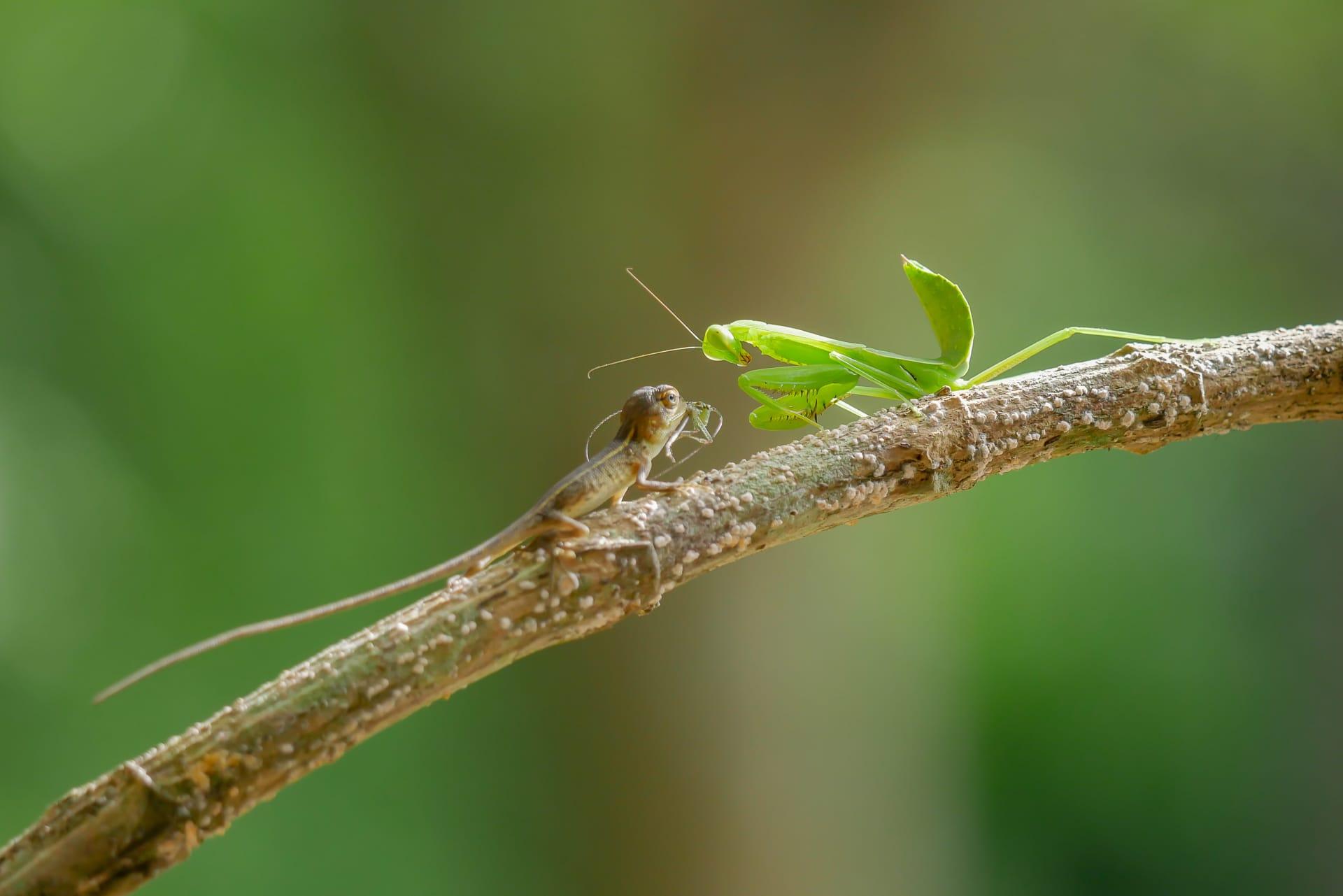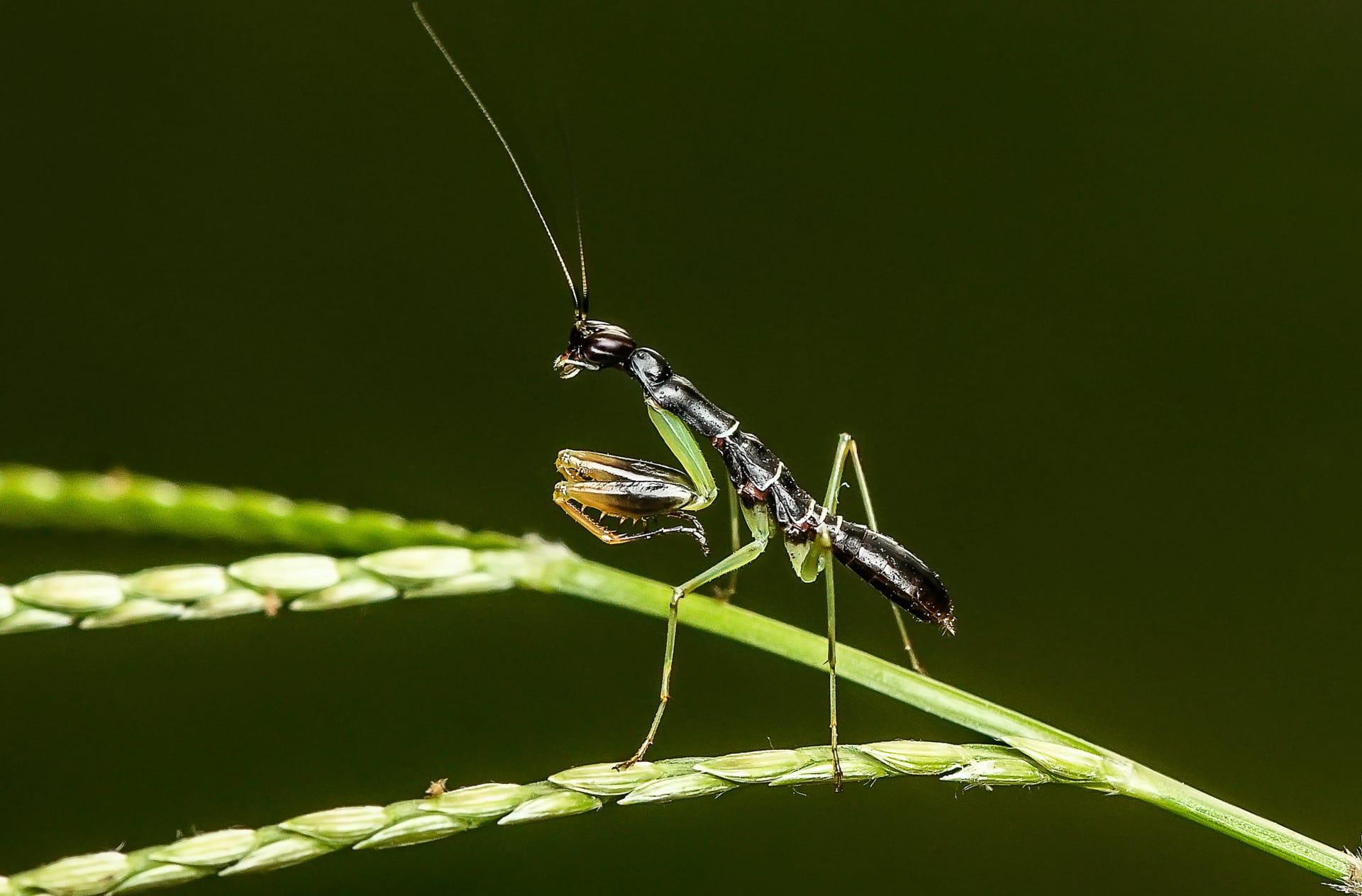Praying Mantis Characteristics
- Home /
- Mini Encyclopedia /
- Animal /
- Praying Mantis Characteristics
1
Praying mantises are fascinating creatures known for their distinctive appearance and predatory skills. These insects can vary greatly in size, with some tiny species measuring just a few centimeters, while larger ones can grow up to 6 inches long. Their lifespan is quite short, with most mantises living for about a year, which encompasses their entire life cycle from egg to adult. What's truly remarkable about these creatures is their coloration and body structure, which allow them to blend seamlessly into their surroundings, providing an excellent camouflage against predators and prey alike.
The most extraordinary organ of a praying mantis is its pair of front legs, which are not only elongated but also equipped with spikes. These legs are folded in a way that resembles a posture of prayer, hence their name. However, these "praying" legs are actually lethal weapons used for hunting. A mantis will stay motionless, blending into its environment until a prey item comes within range. Then, with astonishing speed, it will extend its front legs to snatch the prey, impaling it on the spikes. This rapid strike can occur in less than a tenth of a second, making the praying mantis an efficient and deadly predator.

2
Question: Do praying mantises really eat their mates?
Answer: Yes, in some cases, female praying mantises do eat their mates, a behavior known as sexual cannibalism. This often occurs when the female is hungry and sees the male not just as a mating partner but also as a potential meal. However, it's not a guaranteed fate for every mating encounter. Studies suggest that this behavior might be less common in the wild than previously thought. It appears that environmental conditions, such as the availability of other food sources, play a significant role in determining whether or not a female will resort to eating her mate.

3
Praying mantises are known for their unique movement characteristics, primarily their ability to remain completely still for long periods. This stillness is part of their predatory strategy, making them almost invisible to both prey and predators. When they do move, they do so with deliberate, slow motions to avoid detection. However, when striking at prey, their movements are incredibly quick and precise.
The predatory behavior of praying mantises is both fascinating and gruesome. They are ambush predators, relying on their camouflage to get close to unsuspecting prey. Once a target is within reach, they strike with their powerful front legs, gripping the prey tightly. Mantises are known to consume a wide variety of insects and can even take down small vertebrates such as frogs, lizards, and birds. Their ability to rotate their heads 180 degrees allows them to scan their surroundings with two large, compound eyes, making them formidable hunters.

4
Praying mantises inhabit a wide range of environments, from tropical rainforests to deserts. They are most commonly found in warm regions with ample vegetation, which provides them with both camouflage and a steady supply of prey. These adaptable predators can also be found in gardens and agricultural fields, where they serve as natural pest control agents by preying on insects harmful to crops.
Reproduction in praying mantises involves a fascinating and sometimes perilous courtship ritual, particularly for the male. After mating, the female lays eggs in a foam-like case called an ootheca, which she attaches to a stem or leaf. This case hardens to protect the eggs from predators and the elements. In spring, the eggs hatch, and tiny mantises emerge, ready to begin their life cycle. Interestingly, these nymphs are born as miniatures of their adult forms and do not undergo a metamorphosis like butterflies do.

5
Book: "The Praying Mantids" - This book, originating from the United States in the late 20th century, is authored by Frederick R. Prete and others. It delves into the intricate world of praying mantises, covering aspects from their biology and behavior to their ecological significance. The book is rich with scientific data but presented in a way that makes it accessible to both experts and enthusiasts, offering a comprehensive overview of these fascinating insects.
Book: "Mantids: Nature's Deadly Hunters" - Authored by Paul A. Johnsgard, this book takes a closer look at the predatory nature and survival strategies of praying mantises. Published in the early 21st century, it explores the diverse species found across different continents and their unique adaptations. The book blends scientific research with engaging narratives, providing readers with a deep understanding of mantises' roles in various ecosystems.